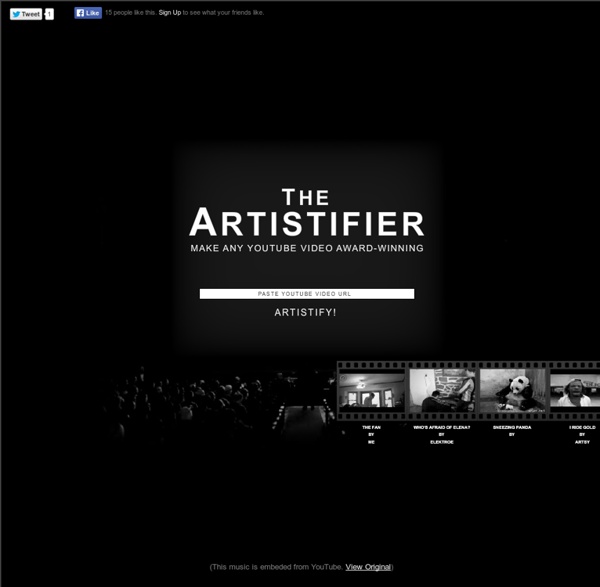



Gmail, Chrome... Google aux couleurs de “Star Wars” Décidément, Google est à fond Star Wars, en ce moment. Hier, le moteur de recherche dévoilait une page spéciale proposant à l'internaute de choisir son camp : le côté lumineux, ou le côté obscur de la Force. Selon le choix que l'on fait, et une fois connecté à son compte Google, plusieurs services tels que Chrome, Gmail, Google Agenda, Google Maps, la recherche Google , Google Traduction, YouTube... modifient leur apparence pour refléter le choix. Comme si cela en suffisait pas, Google a ajouté à son opé promo un easter egg : lorsque l'on tape dans Chrome « a long time ago in a galaxy far far away » dans la barre de recherche, on affiche les dernières news sur le sujet façon générique de Star Wars... Our love of Star Wars started a long time ago, in a galaxy far, far away... — Google (@google) 23 Novembre 2015
List of Names (Random) − Douglas Gordon − g − Artists A-Z − Online Collection − Collection This work consists of a list of names, displayed in columns, as if it were a war memorial or a roll of honour. They are the names of everyone the artist has ever met, or more precisely, everyone he can remember meeting. Gordon says of this work, 'It was an accurate and honest statement but it was full of mistakes (like forgetting the names of some friends), so there were some embarrassing elements in the work, but that all seemed to be quite close to the truth of how our head functions anyway. Sometimes it works and sometimes it doesn't.' Douglas Gordon (Scottish, born 1966) Gordon was born in Glasgow and studied at Glasgow School of Art and the Slade School of Fine Art, London.
Générique Jean Seban : Un générique classant les fonctions et les lieux, c’est une série de violences faite à l’irréductibilité et au mystère de notre maintenant ; c’est la reproduction servile d'une hiérarchie préétablie du travail cinématographique au nom d'un illusoire "respect de l’autre", un respect qui en nommant et en attribuant des places oublie l'infinité des mondes propres à chacun. Pour aller vers l’autre, pourquoi ne proposerait-on pas un mouvement qui le questionne avant de le définir et de lui promettre une identité ? Tu n'es pas chef opérateur car le chant des oiseaux traverse tes images, tu n'es pas réalisateur car tu n'es même pas capable de réaliser qui tu hantes, tu n'es pas chef compositeur car les pop-corn de l'entracte explosent sur tes adagios, tu n'es pas spectateur car à chaque instant tu crées ces sons et ces images que tu regardes, tu n'es pas la salle de cinéma car au fond de l'écran on sent la ville et puis plus loin la mer.
Name List Investigation | Ai Weiwei Documentaries 4851 At 14:28 on May 12, 2008, an 8.0-magnitude earthquake happened in Sichuan, China. Over 5,000 students in primary and secondary schools perished in the earthquake, yet their names went unannounced. In reaction to the government’s lack of transparency, a citizen’s investigation was initiated to find out their names and details about their schools and families. As of September 2, 2009, there were 4,851 confirmed. Little Girl’s Cheeks On December 15, 2008, a citizens’ investigation began with the goal of seeking an explanation for the casualties of the Sichuan earthquake that happened on May 12, 2008. By gathering and confirming comprehensive details about the students, such as their age, region, school, and grade, the group managed to affirm that there were 5,192 students who perished in the disaster. Among a hundred volunteers, 38 of them participated in fieldwork, with 25 of them being controlled by the Sichuan police for a total of 45 times. 采访上访遇难学生家长视频 (2010年)
How your smartphone is changing cinema Smartphone technologies are increasingly playing a major part in film production, distribution and reception. This month sees the launch of what is being billed as the “world’s first selfie movie”. And next a series is to air on Instagram. Last year, Tangerine became the first film shot on an iPhone to feature at the Sundance film festival. The first known film shot entirely on an iPhone was Night Fishing (2011). The director attached a 35mm lens to the iPhone’s camera in order to achieve a cinematic look. More recently, Tangerine presented a blend of traditional codes and conventions associated with cinematic storytelling (such as cross-cutting and using an anamorphic adapter to achieve a wide screen) with newer mobile-specific features (such as continual takes, long tracking shots, and hand-held fluid camera work). New modes of viewing The launch of the iPad in April 2010 opened up further possibilities for cinematic-style storytelling. New ways of filmmaking